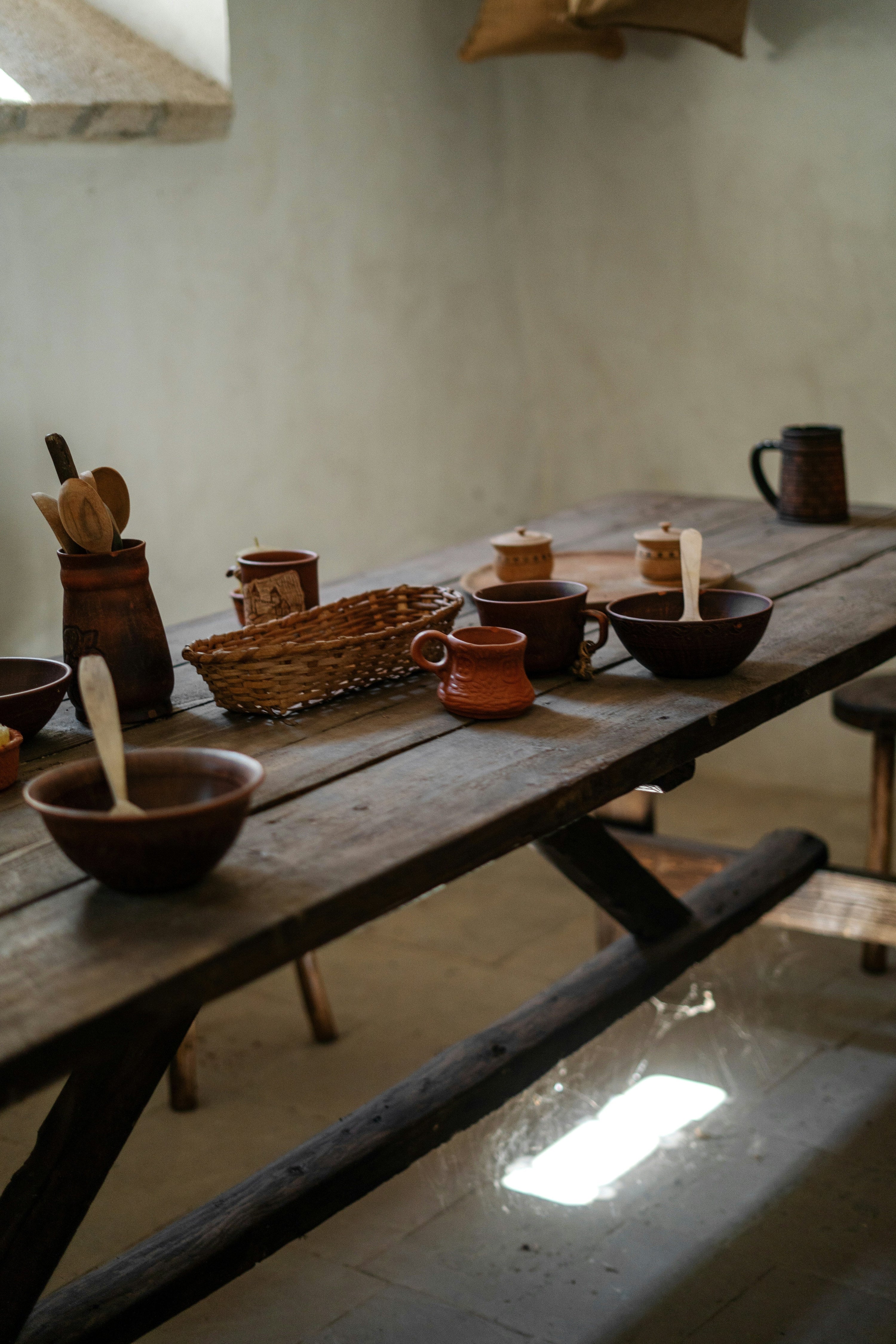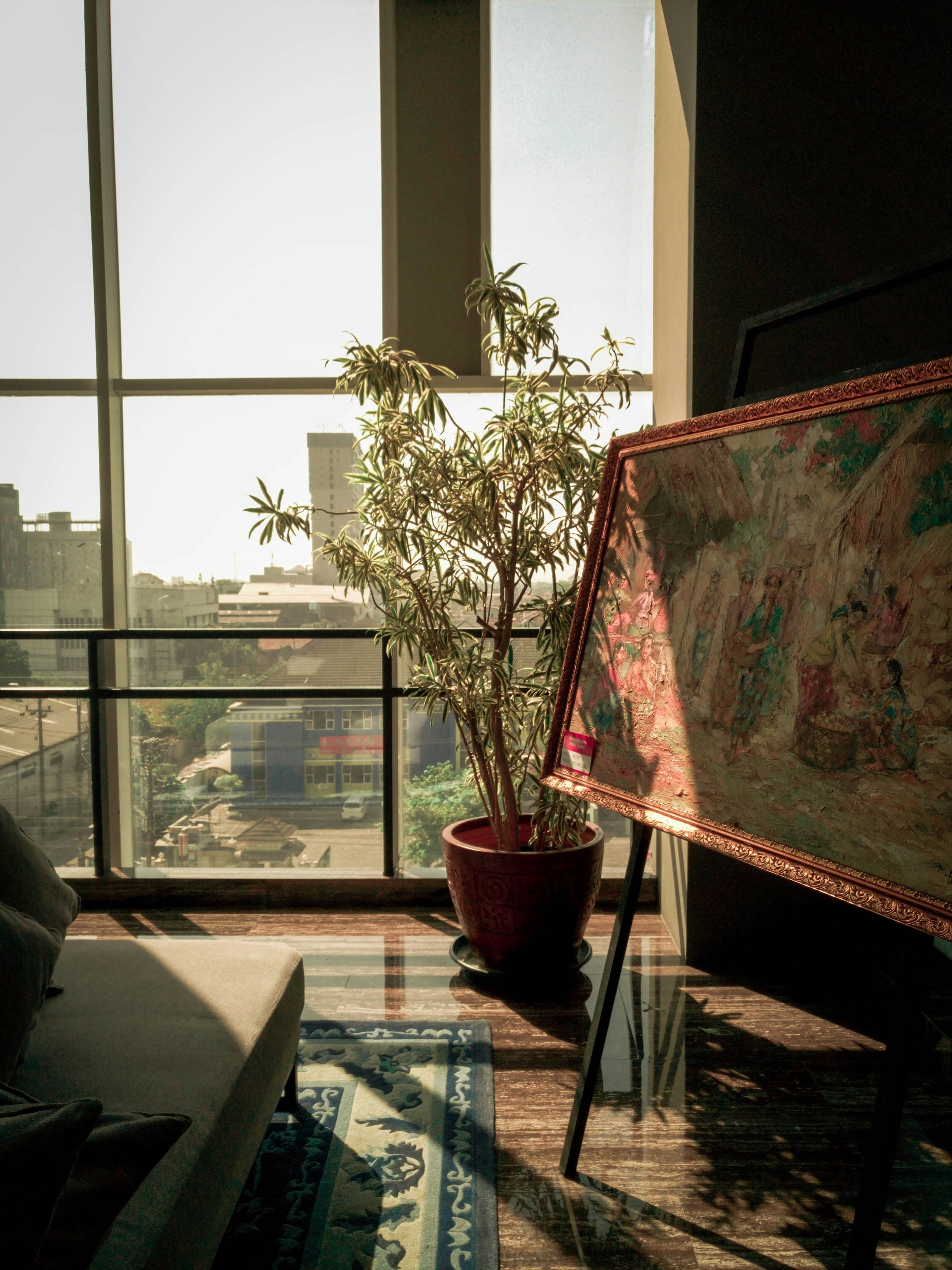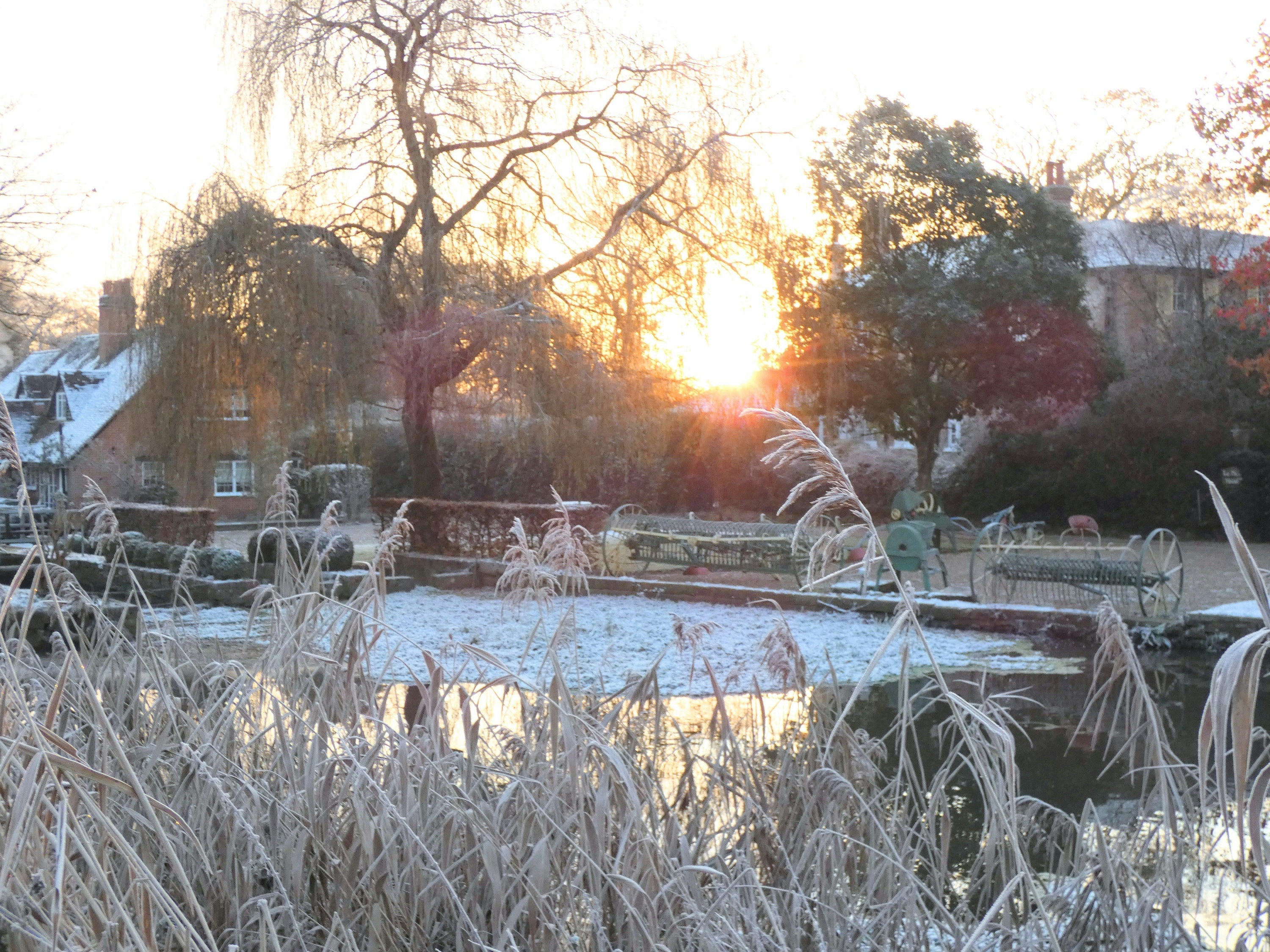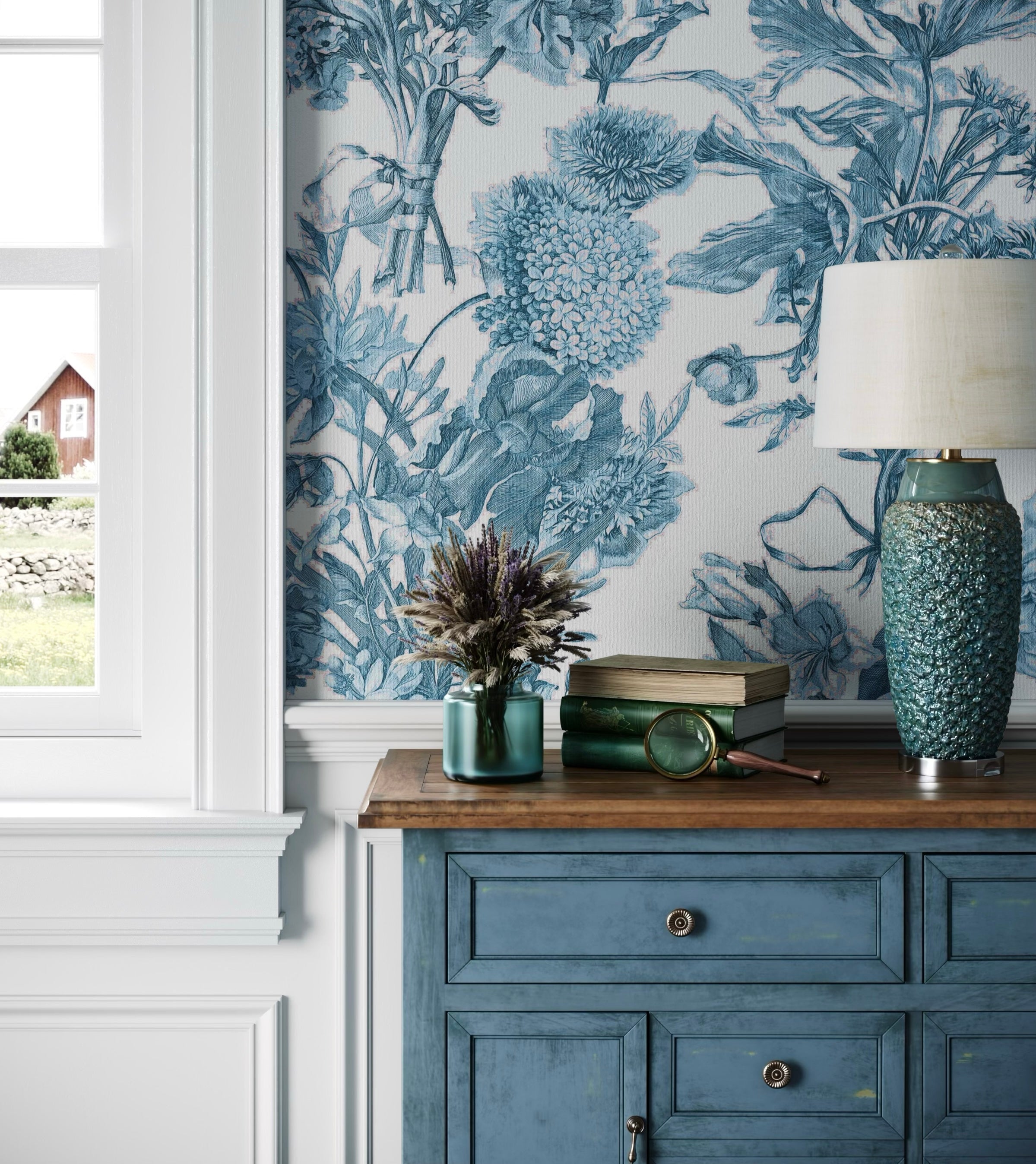Sisuverse Journal | Nest & Nurtured
Investigations into biophilic design, craft traditions, and how natural materials transform homes. Pattern history, architecture, folklore, and objects that shape domestic sanctuary.
-
Read more: Flame and Fragrance: The Material Culture of Scented Candles

Flame and Fragrance: The Material Culture of Scented Candles
The match strikes. Fragrance begins releasing, not all at once but layered. Top notes first, then heart, finally base lingering after flame dies. Scented candles bridge craft and chemistry, ancient ritual and contemporary life. Quality depends on wax composition determining clean burn, wick construction controlling flame, fragrance formulation releasing scent without overwhelming, vessel design containing whilst displaying.
This investigation explores how soy wax burns cleaner at lower temperatures, how perfumery's top-middle-base structure unfolds as candles warm, why pomegranate symbolism activates Persian abundance and Greek mythology, how peony bridges Chinese prosperity traditions with European gardens. Material culture meeting olfactory memory, where domestic objects become ritual tools marking transitions between day and night, work and rest.
Read more -
Read more: Winter Light: Designing For Darkness

Winter Light: Designing For Darkness
Four o'clock darkness arrives decisively in November. The question winter poses isn't how to fight the dark but how to inhabit it. Northern cultures developed sophisticated responses: layered lighting, warm colour temperatures, candlelight as architecture. This exploration examines designing spaces that work with seasonal darkness rather than against it, where comfort sometimes requires shadow more than brightness.
Read more -
Read more: Form Following Function: The Enduring Appeal of Ceramic Tableware

Form Following Function: The Enduring Appeal of Ceramic Tableware
Clay remembers the hand that shaped it. There is something profoundly honest about ceramic tableware. Unlike glass, which disguises its making, or ...Read more -
Read more: Bonsai as Practice: The Art of Decades

Bonsai as Practice: The Art of Decades
Eighty years of patience live in ceramic vessel. Japanese Black Pine, shaped by three generations, branches reaching with asymmetry decades created. What does it mean to tend something that outlives you?
This isn't plant care. This is artistic collaboration with time itself. Bonsai represents practice in truest sense: devotion measured in decades, patience expressed through daily attention, mastery acknowledged only after lifetimes.
Practice emerged in China's Tang Dynasty (700 CE), refined by Japanese Zen monks into meditation through cultivation. British artisans now master technique whilst working with native species. English oak, hawthorn, Scots pine receiving Eastern practice.
Daily watering. Seasonal pruning. Repotting every few years. Wire training branches across months. Mistakes remain visible for decades. No rushing. No shortcut. You begin work you won't see completed.
Some beauty demands patience. Some practice requires devotion. Some trees take lifetimes.
Read more -
Read more: The Hearth: Where Fire Made Homes Sacred

The Hearth: Where Fire Made Homes Sacred
Snow arrives silently across the glen, muffling sound until the world contracts to what's immediately present. Inside the stone cottage, peat smoke rises from the central hearth. Its scent sweet and acrid simultaneously, filling lungs with something older than memory.
The fire doesn't roar or crackle like wood fires do. Peat burns slower, cooler, more patient. It glows rather than flames, radiating heat that seems to come from earth itself rather than combustion.
The hearth determined everything: where people sat, how rooms were configured, which walls received smoke staining, where cooking happens, how stories are told. The hearthstone beneath the fire is worn smooth. Depressed slightly in the centre where centuries of fires have heated and cooled the granite, causing microscopic expansions and contractions that gradually reshape even stone.
This is where homes became sacred.
Before central heating, survival in cold climates meant understanding fire's relationship to architecture. Celtic rituals. Scottish peat fires. Scandinavian tile stoves. Alpine masonry. English inglenooks. Irish eternal flames. Basque kitchen hearths. Each culture solved the challenge of warmth through accumulated knowledge spanning centuries.
The hearth gathered households into shared space. Forced proximity that contemporary architecture often avoids. What hearths taught about survival transcends heating—they demonstrated that comfort requires maintenance, that warmth is earned through labour, that resources must be gathered and managed thoughtfully.
Where fire made homes sacred, what makes them sacred now?
Read more -
Read more: The Language of Thatch: When Roofs Were Woven from the Land

The Language of Thatch: When Roofs Were Woven from the Land
Rain on thatch sounds different. Thousands of hollow reed stems receive water, channel it downward and outward, creating acoustic environment somewhere between outside and inside. The smell rises too: wetted straw, slightly sweet, faintly grassy, mixed with wood smoke from the hearth.
Thatch is living material in ways that tile, slate, and metal can never be. It grows in wetlands and grain fields. It's harvested with precise timing. It dies slowly across decades whilst providing shelter, and eventually returns to earth. Throughout its service, it harbours life: insects, birds, lichens, mosses. It breathes, allowing moisture to escape upward whilst shedding rain outward.
This exploration traces thatching traditions across Atlantic and northern Europe. From Cornish fishing villages where steep-pitched wheat reed answered horizontal rain driven by ocean gales, to Norfolk Broads producing Britain's premium water reed, to Scottish Highland blackhouses where heather thatch and peat smoke created distinctly adapted shelter, to Scandinavian turf roofs where grass grew and goats grazed overhead.
We investigate the materials (reed, straw, heather), the regional techniques shaped by local climate and available resources, the harvest cycles and craft knowledge transmitted through centuries of practice. Contemporary thatching faces economic pressures threatening knowledge transmission, yet demonstrates biophilic principles that sustainable architecture laboriously rediscovers: breathability, natural insulation, integration with landscape, biodegradable materials requiring minimal processing.
Shelter woven directly from the land it protects us from.
Read more -
Read more: Why Cornish Fishermen Never Whistled at Thresholds: Atlantic Doorway Traditions

Why Cornish Fishermen Never Whistled at Thresholds: Atlantic Doorway Traditions
The wind comes off the Atlantic with the force of something personal, something directed. It finds every gap in the stone cottage's walls, every weakness in the mortar, pressing against the wooden door until the hinges complain. Outside, Cornish clifftop grass bends horizontal, waves throw themselves against rocks in white explosions, gulls hang suspended in updrafts. Inside, beyond that door, is stillness, warmth, the smell of burning coal and baking bread, lamplight steady in its globe.
Between these states lies the threshold. She stands before the cottage door, hand on the latch, rain beginning to stipple her oilskin coat. The crossing from outside to inside is never merely physical in places where weather is adversary and shelter is precious. Her grandmother taught her pause at the threshold, knock twice against the doorframe even though it's your own home, never whistle as you cross, and close the door firmly behind you. These aren't superstitions precisely, though they carry superstition's gravity. They're technologies of transition, ways of marking the boundary between exposure and sanctuary, wildness and domestication, the world and home.
Read more -
Read more: From Palace Walls to Paper: A Material History of Covering Surfaces

From Palace Walls to Paper: A Material History of Covering Surfaces
The blade slides beneath aged paper, separating decades from plaster. She works slowly, careful not to tear what she's uncovering: beneath magnolia woodchip lies mustard velvet flock, beneath that a William Morris acanthus in faded green, deeper still a hand-blocked geometric from perhaps the 1920s, and finally, against the original plaster, fragments of something older, a pattern so worn the design barely registers. Five layers. Five families. Five distinct moments when someone stood in this room and decided: this pattern, this colour, this is what we want surrounding us.
The smell is particular: wheat paste gone sour, pigment oxidised, paper fibres returning to pulp. Her hands work the scraper whilst her mind works the archaeology. Each layer a choice about beauty, about fashion, about what walls should say when they stop being merely structural and become expressive.
Read more -
Read more: The Architecture of Gathering: Table Setting as Sanctuary

The Architecture of Gathering: Table Setting as Sanctuary
The table waits empty. Late October afternoon, light already failing though it's barely four o'clock. She moves between kitchen and dining room, carrying objects one at a time: linen runner the colour of aged paper, ceramic plates with hairline cracks that speak of years rather than damage, brass candleholders heavy in the hand. Each placement deliberate, a small decision about where things belong, how they relate, what the composition says before anyone speaks a word. This is older than hospitality. Older than manners.
The act of preparing surface for shared eating touches something primal: the circle around fire, the communal bowl, the agreement that for this time, in this space, we pause our separate struggles and become briefly, intentionally, together. She folds napkins without thinking, hands remembering the motion from childhood tables. Outside, wind strips the last leaves from the ash tree. Inside, she lights the first candle. The flame steadies, catches on brass, throws soft light across linen. The table begins to hold something beyond its objects: expectation, intention, the promise that when people arrive, something will shift from ordinary to consecrated.
Read more -
Read more: The House That Holds You: Psychology, Folklore, and the Architecture of Wellbeing

The House That Holds You: Psychology, Folklore, and the Architecture of Wellbeing
The key turns. Not smoothly but with that familiar catch at the halfway point, metal finding the groove it has found ten thousand times before. The door swings inward. Before thought forms words, before bags drop to the floor, before lights switch on, the body already knows. Shoulders fall. Breath deepens. Something in the chest unclenches. This is not metaphor.
Scientists can measure it: cortisol dropping, heart rate slowing, the hippocampus recognising these particular walls, this precise angle of afternoon light through that west window. Your body reads home before your mind catches up. The Romans knew this. They placed household gods in corners, small bronze figures called Lares who witnessed everything, who absorbed the life lived within those walls. The Japanese understood it differently but equally: kami dwelling in beloved objects, houses accumulating soul through decades of habitation. The Scots said it plainly: some houses feel happy, some troubled, and you know which within moments of crossing the threshold. They were all describing the same truth. Your home is not shelter. It is participant. It shapes what you think, what you remember, how you feel. It holds you. The question is whether it holds you well.
Read more -
Read more: Autumn & Winter Botanicals: Native British Plants for Colder Months

Autumn & Winter Botanicals: Native British Plants for Colder Months
October morning in a Somerset garden. The mist has not lifted yet but she is already outside, secateurs in hand, breath visible in cold air. The roses are finished, their hips swelling where blooms once were. The dahlias blackened by first frost lie collapsed against their stakes. Everything exuberant has retreated. This is when the garden shows what it truly is, stripped of summer's abundance, revealing the bones beneath. The yew hedge stands dark and solid.
The holly glitters with berries no bird has touched yet. Teasel seed heads catch drops of condensation, geometric and perfect in their decay. These are not reluctant survivors but plants evolved for precisely this: short days, long nights, frost settling in hollows, Atlantic gales. They do not merely endure winter. They inhabit it. She has been learning this slowly, through three autumns spent observing rather than intervening, through winters watching which plants hold their form whilst others collapse into mulch. The garden's true character emerges now. Not in May's explosion but in November's patient architecture. This is when you discover whether you have built sanctuary or merely arranged decoration.
Read more -
Read more: The Architecture of Scent: Understanding Fragrance Notes in Candles and Diffusers

The Architecture of Scent: Understanding Fragrance Notes in Candles and Diffusers
Fragrance is architecture rendered invisible—a carefully orchestrated sequence of top, heart, and base notes that shapes domestic atmosphere as profoundly as light or colour. From Calabrian bergamot that evokes Mediterranean mornings to frankincense carrying five millennia of sacred tradition, each botanical essence tells a story of place, culture, and time.
Understanding how scent molecules move through space, why lavender calms whilst rosemary clarifies, and how to compose fragrances that serve different needs transforms passive consumption into intentional practice. This is not decoration but neuroscience, not luxury but necessity: the invisible architecture that shapes memory, mood, and the quality of daily life. Discover how thoughtful fragrance selection creates sanctuary, supports wellbeing, and brings the natural world into your home through the ancient art of botanical scent.
Read more
















